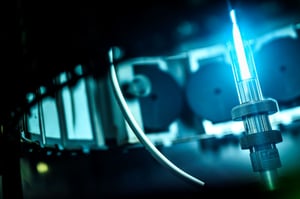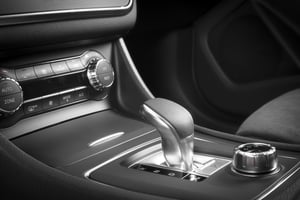
Fogging
Determination of the fogging behavior of materials used in vehicle interiors
FOGGING TEST IN THE
AUTOMOBILE INTERIOR
Accredited condensation tests
Artificial weathering in automotive testing is an important method for simulating environmental influences on vehicle components, especially for testing UV resistance. Artificial weathering simulates accelerated ageing processes caused by UV radiation, temperature, humidity and other environmental factors in a controlled laboratory environment. This enables a faster assessment of the long-term durability of materials and components than would be possible with natural weathering.
- Areas of application
- Test parameters
Areas of application
- Interior and exterior components
- Paints and coatings
- Plastic parts
- Seals and adhesives
- etc.
Test parameters
- UV intensity
- temperature
- Air humidity
- Irrigation
- Duration
The following evaluations can be carried out after artificial weathering:
- Visual inspections
- Appraisal
- Color and gloss measurements
- Mechanical tests (e.g. tensile tests)

Fogging test methods
- DIN 75201-A (reflectrometric)
- DIN 75201-B (gravimetric)
- PV 3015 (Volkswagen)
- GMW 3235-A (General Motors Worldwide)
- PSA D45 1727
- and much more.
Test methods / specifications
- DIN EN ISO 105-B06
- SAE J2412
- VDA 75202-A
- VW PV 3930
- VW PV 3929
- VW PV 1306
- VW PV 1303
- MBN 10506 (Kalahari mode)
- MBN 10505 (Florida mode)
- and much more.
Are you looking for an exam? Standard? Specifications?
Accredited & certified tests
CONTACT OUR EXPERTS
Description. Lorem ipsum dolor sit amet, consetetur sadipscing elitr, sed diam nonumy eirmod tempor invidunt ut labore et
- Tab Title






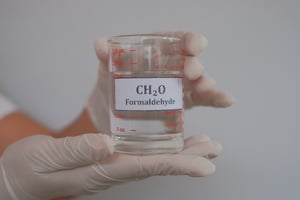
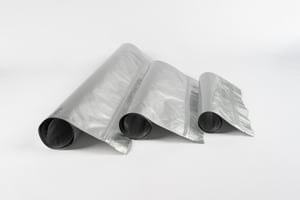
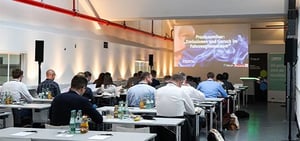

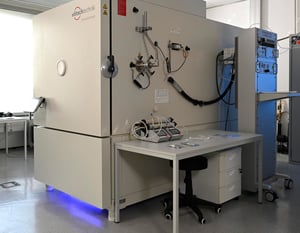
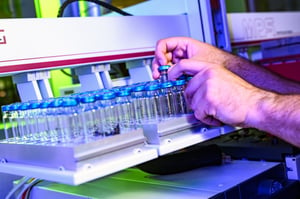








Frequently asked questions about the fogging test
The sample quantities required for a fogging test depend on the standard and the test method used. Here are the general guidelines:
1. standard DIN 75201 (type A and type B)
-
Type A (glass plate method):
A sample quantity of 10 cm² is typically required. The sample is placed on a heated plate in a sealed chamber and the volatiles released condense on a glass plate above. -
Type B (aluminum foil method):
Similar to type A, a sample volume of approximately 10 cm² is used. However, the volatile substances condense on a cooled aluminum foil.
2. standard ISO 6452 (international standard)
- Sample quantity:
Again, a sample size of about 10 cm² is typically required to evaluate the amount of volatiles released at elevated temperature.
3. other specific requirements
Depending on the specific requirements of the customer or OEM standards, sample quantities may vary. It is important to check the respective standards or test requirements carefully.
Method A - Reflectometric method:
- Principle: This method measures the change in reflectivity on a glass plate on which volatile components from the material sample are deposited.
- Procedure: A material sample is heated in a beaker while a glass plate above it is cooled to 21°C. The temperature difference causes the volatile components to condense on the glass plate. The reflectance index of the fogged glass plate is then measured to determine the amount of condensed material.
- Application: This method is particularly suitable for materials for which an exact determination of the optical fog effect is required.
Method B - Gravimetric method:
- Principle: This method measures the weight of condensed volatiles on an aluminum foil.
- Procedure: The material sample is heated in a beaker while an aluminum foil disc is cooled to 21°C. After 16 hours, the amount of condensed material on the foil is weighed.
- Application: This method is ideal for an accurate quantitative determination of the amount of condensed volatiles.
CONTACT US
ENVIRONMENTAL SIMULATION
Korrosion
Read moreWas versteht man unter Umweltsimulation im automobilen Kontext?
Read moreSteinschlagprüfungen - Sicherheit auf der Straße beginnt im Labor
Read moreKorrosion
Read moreWas versteht man unter Umweltsimulation im automobilen Kontext?
Read moreSteinschlagprüfungen - Sicherheit auf der Straße beginnt im Labor
Read moreKorrosion
Read moreWas versteht man unter Umweltsimulation im automobilen Kontext?
Read moreSteinschlagprüfungen - Sicherheit auf der Straße beginnt im Labor
Read moreFREQUENTLY ASKED QUESTIONS ABOUT EXPOSURE TESTS
In the automotive sector, organic materials and plastics are particularly susceptible to UV damage. Here are the most frequently affected materials:
-
Plastics:
- Polyethylene (PE): used in fuel tanks and interior trim.
- Polyvinyl chloride (PVC): Cable insulation and interior components.
- Polystyrene (PS): Instrument panels and trim.
- Acrylonitrile butadiene styrene (ABS): bumpers and dashboards.
UV radiation can cause yellowing, embrittlement or decay in these plastics.
-
Rubber materials:
Rubber based on EPDM (ethylene propylene diene rubber), often used for seals and windshield wipers, is particularly susceptible to cracking and material fatigue due to UV exposure. -
Paints and coatings:
Organic paints and coatings, for both interior and exterior applications, can fade, yellow or peel due to UV radiation. -
Textiles:
Interior textiles such as seat covers, headliners and carpets tend to fade and lose their mechanical properties due to UV radiation. -
Adhesives and sealants:
Many adhesives and sealants lose their adhesion or flexibility due to UV exposure, which can impair functionality.
Yes, we carry out tests in accordance with national and international standards and OEM-specific requirements. imat is accredited for the most important tests. Find out more about our accreditations here.
